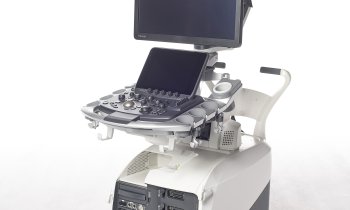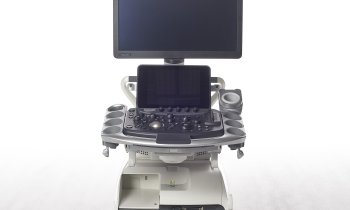Elastography reduces unnecessary breast biopsies
Elastography is an effective, convenient technique that, when added to breast ultrasound, helps distinguish cancerous breast lesions from benign results, according to an ongoing study presented today at the annual meeting of the Radiological Society of North America (RSNA).
When mammography yields suspicious findings, physicians often use ultrasound to obtain additional information. However, ultrasound has the potential to result in more biopsies because of its relatively low specificity, or inability to accurately distinguish cancerous lesions from benign ones. Approximately 80 percent of breast lesions biopsied turn out to be benign, according to the American Cancer Society.
"There's a lot of room to improve specificity with ultrasound, and elastography can help us do that," said the study's lead author, Stamatia V. Destounis, M.D., a diagnostic radiologist at Elizabeth Wende Breast Care, a large, community-based breast imaging center in Rochester, N.Y. "It's an easy way to eliminate needle biopsy for something that's probably benign."
Elastography improves ultrasound's specificity by utilizing conventional ultrasound imaging to measure the compressibility and mechanical properties of a lesion. Since cancerous tumors tend to be stiffer than surrounding healthy tissue or cysts, a more compressible lesion on elastography is less likely to be malignant.
"You can perform elastography at the same time as handheld ultrasound and view the images on a split screen, with the two-dimensional ultrasound image on the left and the elastography image on the right," Dr. Destounis said.
As part of the ongoing study, 179 patients underwent breast ultrasound and elastography. The research team obtained 184 elastograms and performed biopsies on all solid lesions. Of 134 biopsies, 56 revealed cancer. Elastography properly identified 98 percent of lesions that had malignant findings on biopsy, and 82 percent of lesions that turned out to be benign. Elastography was also more accurate than ultrasound in gauging the size of the lesions.
"Ultrasound can underestimate the true size of lesions, as it only sees the actual mass and not the surrounding changes the mass may cause," Dr. Destounis said.
In 2009, there will be an estimated 192,370 new cases of invasive breast cancer among women in the United States, according to the American Cancer Society, along with about 62,280 new cases of ductal carcinoma in situ, a noninvasive, early form of breast cancer.
30.11.2009











